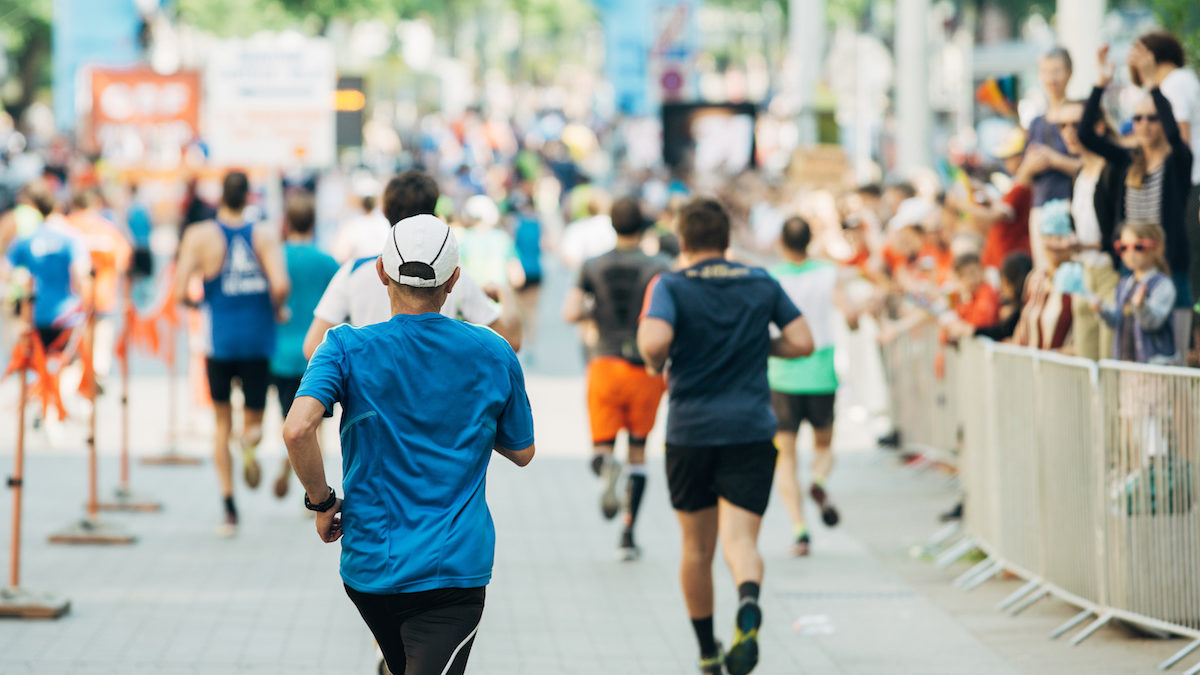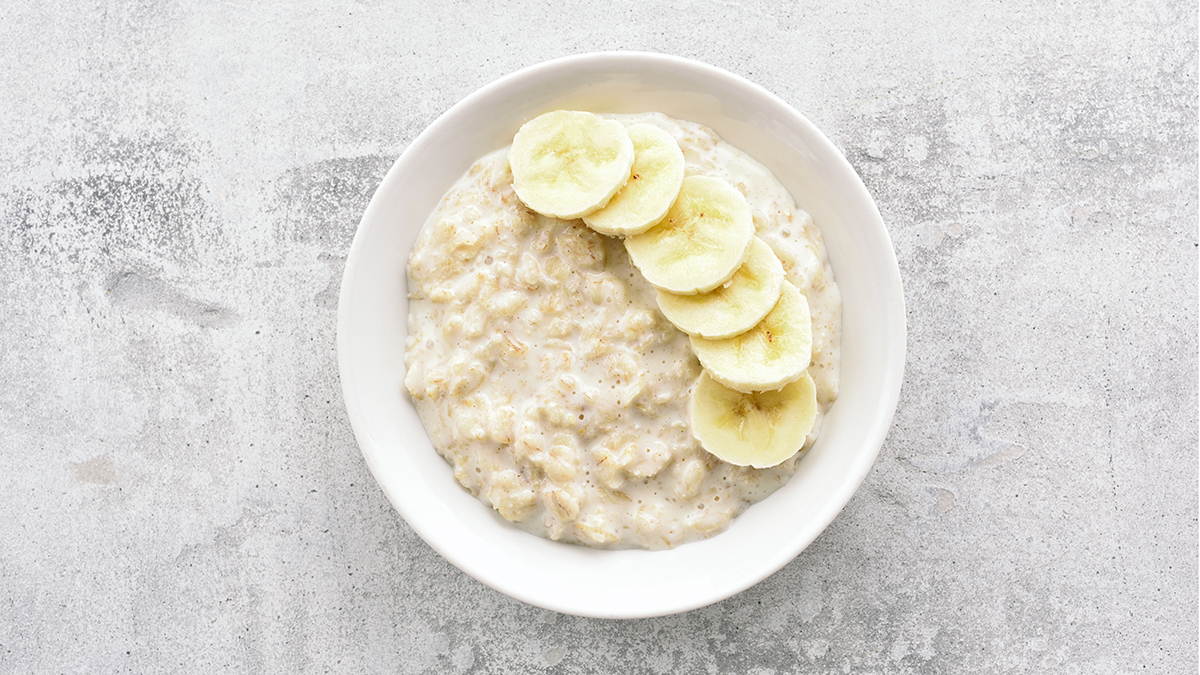Everything You Need To Know Before You Run a (Virtual) Marathon

Race day, for many runners, is what it’s all about; the long-awaited chance to prove yourself, bag a shiny new PB and smash out the kilometres for a seriously blingy medal. It’s a victory dance after months of early morning miles and lunchtime speed sessions, and for many, reason – and motivation – to keep running.
So, for the thousands who dedicated the first few months of this year to marathon training, the heartbreaking decision to cancel or postpone many races because of the COVID-19 outbreak – Boston, New York, London, Berlin, and Chicago, of the world majors, and many more across the globe – was a massive (but necessary) blow.
Now that lockdown restrictions have eased, there’s an alternative approach taking flight: a new wave of virtual marathons offering runners the opportunity to lace up from the comfort of their own hand-picked running route. Even the London Marathon, which has taken place every year since 1981, has announced it’ll be virtual for the general public this year, with a closed-course race being held for a handful of elites.
Considering lacing up for its virtual marathon yourself? Let us help you devise your training plan then, crack your race strategy and smash your fuelling with expert advice from run coaches, personal trainers, sports nutritionists, and more.
What Is A Virtual Marathon?
Naturally, as the world shut down to protect lives from the Coronavirus outbreak, scope for mass events with 1000+ runners quickly dwindled. That’s where virtual marathons have come in, but how do they work? Well, most virtual races require runners to complete the distance – for a marathon, 26.2 miles – in their own time, on their own route. Then it’s just a matter of submitting your time online to prove you’ve completed the distance.

Virtual running events have allowed safe competition for runners to achieve their goals within the current government guidelines. “They also help to keep training motivation high,” says New Balance running coach Steve Vernon.
Which marathons have gone virtual in 2020?
- Boston Marathon – September 7th to 14th
- London Marathon – October 4th
- NYC Marathon – October 17 – November 1
- Edinburgh Marathon – anything before 31st December
Plus many more non-major events, including a lot of shorter distance RunThrough races.
What Are The Main Differences Between An IRL And Virtual Marathon?
Apart from the fact that you’re not taking part in a mass event with crowds, cheer spots, and medics on hand to offer assistance? The routes, Vernon explains. “Most marathons take place on a set course with closed roads, which means you’re protected from traffic or pedestrians. If you do run a virtual marathon, it’s important to plan a route that’s safe and shielded from any busy roads.”
Plus, the timings will be more flexible than your standard race, explains strength and conditioning coach and sports scientist Emma Kirk-Odunubi. “A race day marathon kicks off at a certain time with everyone in unison. The beauty of a virtual race is that you have a 24-hour time frame to complete the run, making it more accessible.”
She suggests breaking the run up during the day if you’re daunted by the distance in one stint. For example, you could tackle 10km before breakfast, 10km pre-lunch, 10km mid-afternoon, and then smash the final 12km after dinner.
Remember, there won’t be toilets, water stations, gel stations, crowds, or cheer points, not to mention medical staff on hand should you need assistance, so you’ll need to be prepared. Don’t forget you’ll also have to wait a few days for your medal to arrive in the post.

Are Their Any Dangers In Running A Virtual Marathon?
So much can happen on the day of any race, so it’s important to be prepared. Respect the distance and the challenge you’re putting your body through. Remember that setting out totally alone (that is, without at least sharing your route and live location) is not advised.
Vernon recommends running with a partner or small group, and if that’s not possible, roping a friend in to cycle along with you.
How Do I Train For A Virtual Marathon?
If you do decide to go ahead and tackle a marathon virtually this year, it’s important to remember that, virtual or not, a marathon is hard, New Balance run coach and athlete Jonny Mellor warns.
Build Your Mileage Steadily
“The best way to train for a marathon is to start building your base mileage over time to three to five runs a week,” he explains. “Running is a simple sport in that the more you run, the better you get.
“However, you should build sensibly and progressively to reduce the risk of injury and over training.”
Incorporate Long Runs
He’d recommend a long run every Sunday to get your legs used to the longer distances and extend by a mile or two each week, capping at 20 miles. Two weeks before the event you should begin your taper, explains running coach Adam Clarke of Purdue Performance. That means reducing your mileage so your legs are fresh and ready for race day. “Don’t try to cram in an extra long run in the last two weeks,” he warns, “it’s actually more detrimental than beneficial.”

Give Yourself Time To Train
If you’re new to marathon training, make sure to give yourself enough time to prepare your body for the challenge, warns Kirk-Odunubi. “Build up steadily and don’t rush to increase your mileage. A beginner should train for 16 to 20 weeks before tackling their first-ever marathon to reduce the risk of injury”.
Rest And Recover
Smash the training miles but remember to rest, too, says Mellor. “All good training plans include rest and recovery days, to prevent injury and enable your body to adapt to the training”. If you’re keen to do some form of active recovery on these days, consider cross-training, such as cycling or swimming, he advises.
Follow (And Stick To) A Set Plan
Not sure where to look for training plans? The Internet is the obvious place to start, with sites like Runner’s World offering solid training strategies. However, Vernon recommends seeking advice from a qualified coach or a more experienced runner, too. “Often the Internet is filled with conflicting advice and runners claiming to be experts, however, there is a network of fantastic run clubs and training groups across the country who can share experiences and advice to beginner runners.”
Don’t know any runners or run clubs? Don’t fret. “Seeking advice from an online running coach is also an excellent investment and they’re easy to seek out. An online coach can design a training plan for you based around your current goals, previous training history, and taking into account work and family commitments”.
Are There Any Potential Race Strategies I Can Follow For Race Day?
This is dependant on your ability pre-race day and your personal goals and achievements, but there are a few no-brainers everyone should be following, according to the coaches.
“Head off conservatively and pick up the pace after you get to halfway”, shares Clarke. This is called ‘negative splits’, and ensures you don’t exhaust yourself heading out too fast, too soon.
Vernon advises making sure to plan your route and let friends and family where you’ll be. This is important for safety reasons, but also motivation purposes. “It’s really difficult to simply go out and run for 26.2 miles without making a solid route plan.
Choosing your route ahead of time will not only ensure you reach your goal mileage but will help keep you focused on running rather than figuring out where to run”, he explains.
Make sure you’ve got enough gels and water on you or en route. If you’re running on your own or with a small group of friends,
Mellor recommends a lapped course so you can pick up drinks and gels each lap. “This also gives you the safety of being close to the start if you have any difficulties during the marathon.”

Got friends keen to come support you? “Any motivation on a bike or at checkpoints along the way will be a huge help, emotionally and physically in the form of water, snacks, Vaseline and so on,” he adds.
How Do I Fuel For A Virtual Marathon?
Again, this is very personal, but as a general rule of thumb, drink lots of water, know which gels work for you, and up your carb intake (sensibly), recommends sports nutritionist Anita Bean.
During training, make sure you’re monitoring (and matching) your energy intake and energy output. “Marathon training isn’t a licence to eat whatever you want—you may experience an appetite increase, but try to listen to your body and only put back what you took out, like balancing your bank account,” she recommends.
On the carb front, she advises keeping it simple. “Stick to familiar foods – foods that you know agree with you – and eat them in normal-sized amounts, so no need for mountains of pasta.” This can be a portion of porridge, rice, potatoes, sweet potatoes, or bread with each meal and two or three high-carbohydrate snacks, such as bananas, fruit and nut bars, or toast, a day. “Eating little and often can be an easier strategy than eating big meals the day before the race so you don’t over-burden your stomach,” she explains.
Come race day, you’ll need a clear fuel strategy that’s been practiced ahead of time. “Your body doesn’t have enough glycogen stores to fuel you for 26.2 miles, so you’ll need to refuel en route”. Start after about 60 minutes, and try a gel or sports drink every 30 to 60 minutes to maintain optimal glucose levels, she advises. Any more than this and your gut will struggle; any less and you may experience serious fatigue.

Not a fan of sports drinks or gels? There are a number of more natural carbohydrate sources you could fuel with, from dates, to Trek bars, to bananas. One thing that is essential is having tried out your fuel of choice on a long run pre-race day, so you know if it doesn’t agree with you or your stomach.
What about water? “During the marathon, there are no strict rules about how much to drink as this depends on how much fluid you lose through sweat. The International Marathon Medical Directors Association suggest 400 to 800ml of fluid per hour, depending on your sweat rate,” Anita explains.
Post-race, make sure to consume a meal that’s a good balance of carbs and protein before you head off to celebrate. “Replenish your glycogen stores with 1g of carb per kg of bodyweight and promote muscle repair with 20g of protein.” Think yogurt and banana, peanut butter sandwiches, home-made super-flapjacks, blueberry muffins or fruit and nut loaf, and you’re good to go.
13 Important Things To Remember Before You Run A Virtual Marathon
- Plan your route to avoid road closures, busy junctions or dangerous roads.
- Practice your fuelling strategy ahead of race day
- Road test your kit and shoes pre-race day.
- Share your route with friends or family beforehand if you’re planning on running solo.
- Know the specific rules and guidelines ahead of your event, such as time scales to upload your run and any other terms and conditions.
- Don’t forget to record your run using a GPS device or similar to upload proof of your run.
- Trust in your training and commit to the mileage.
- Don’t try anything new on the day.
- Get ready to hit ‘the wall’ and know how to push yourself through it.
- Respect the distance and the challenge.
- Enjoy the community aspect created on social.
- Remember it’s your race. Don’t compare yourself to others. Do what works for you, whether that’s in one go or broken up throughout the day.
- Lastly, smile, run strong and have fun.


















